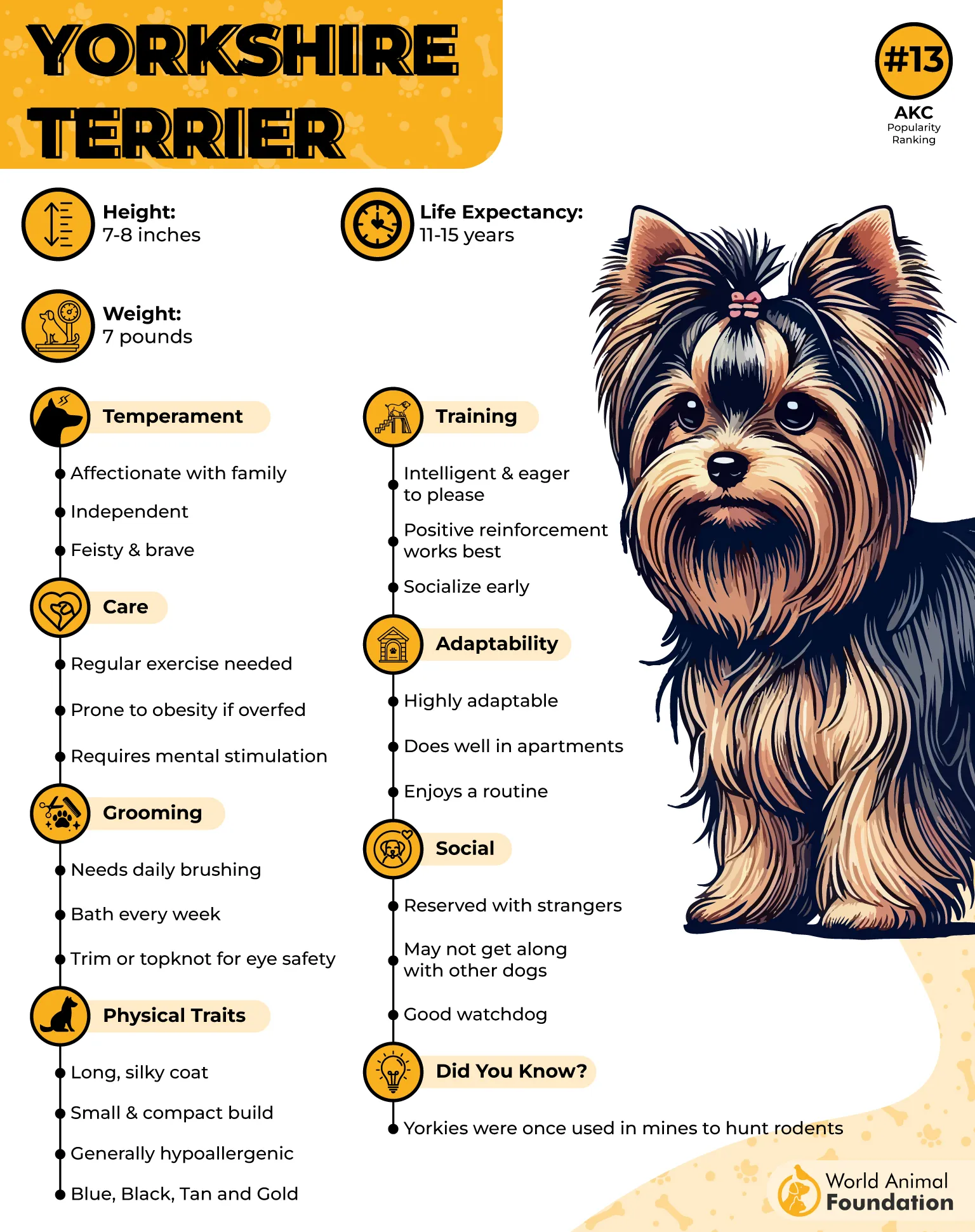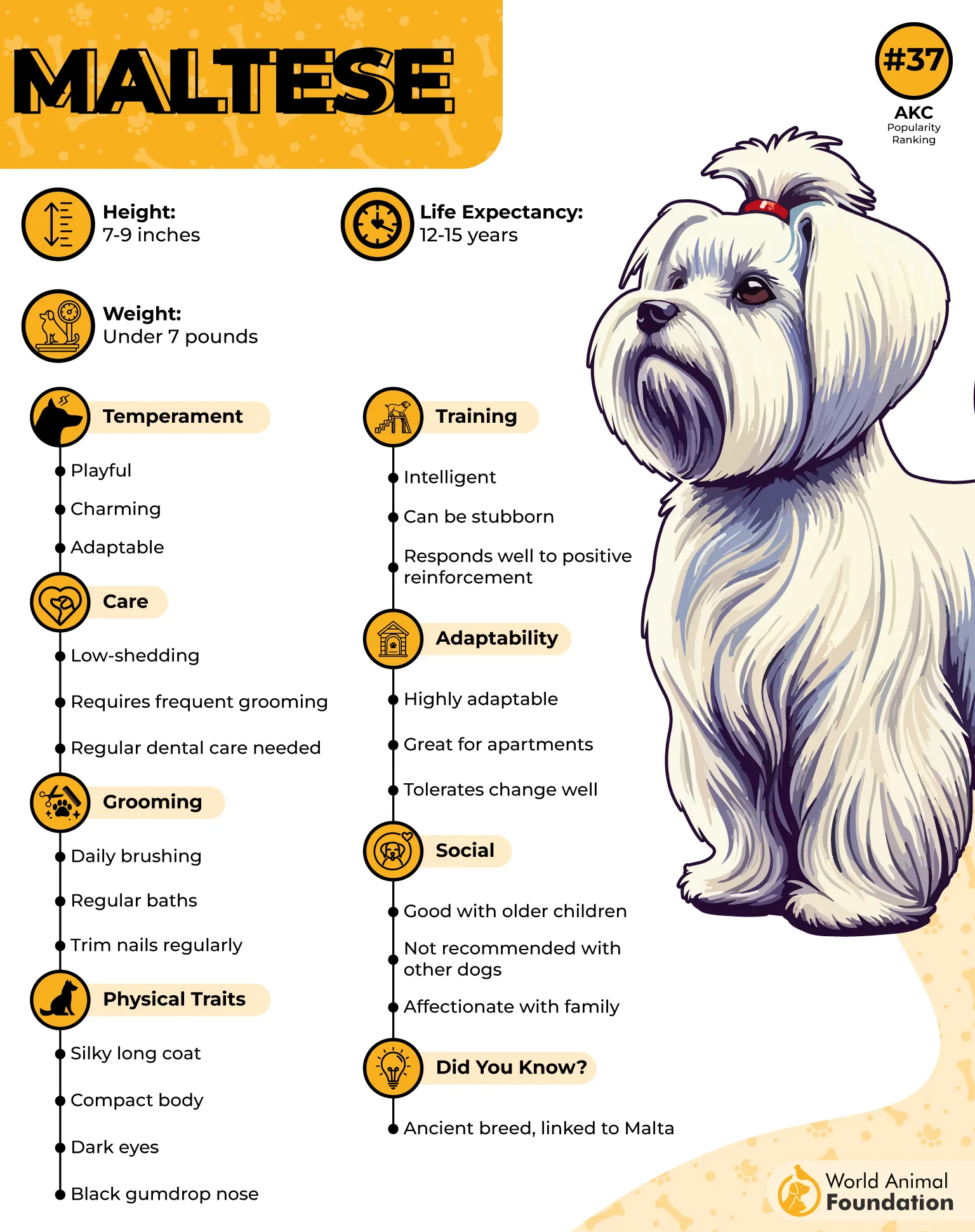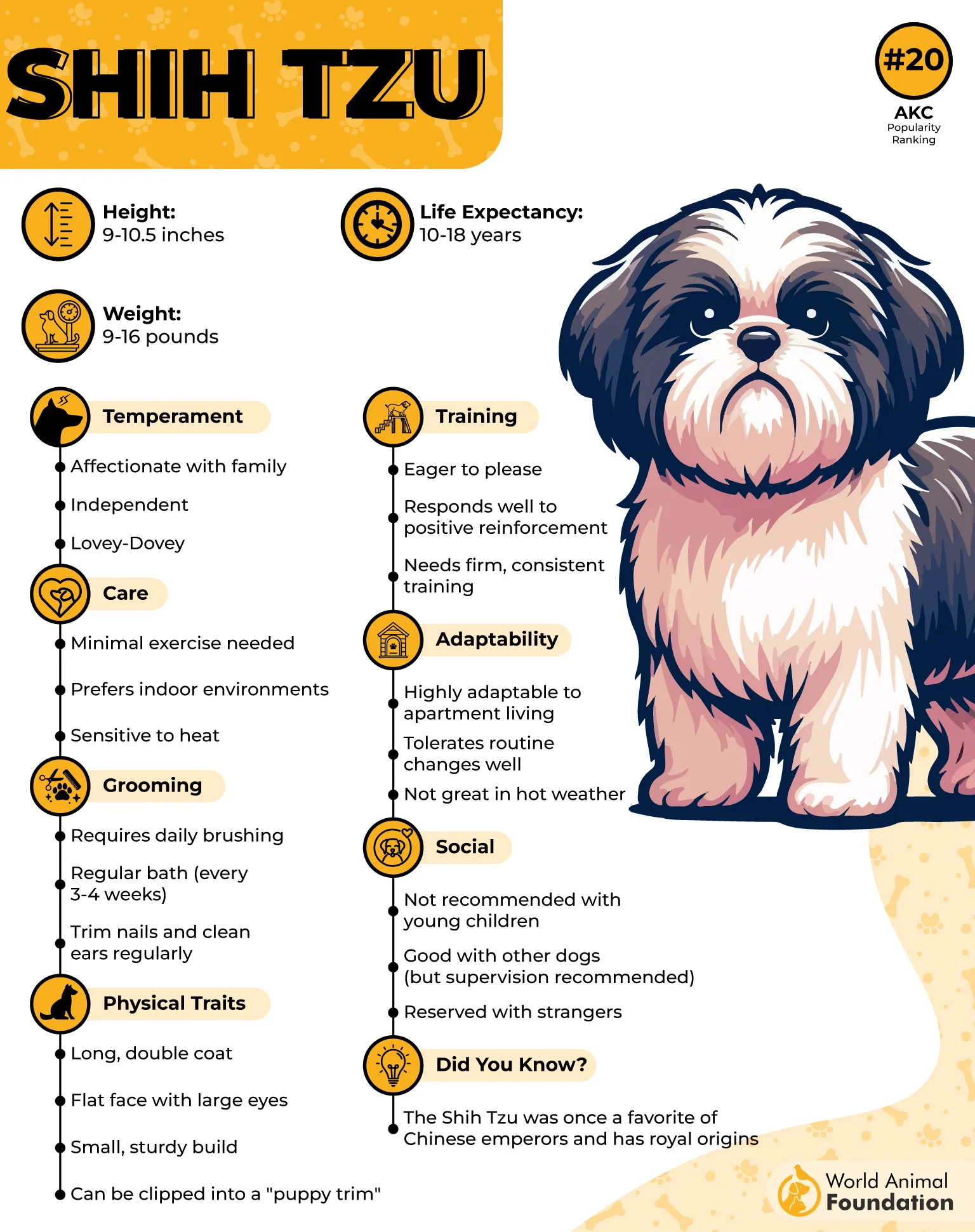Not all dogs are indiscriminate eaters. While many will happily gulp down anything in their bowl, some breeds are noticeably more selective. These dogs may sniff, inspect, or outright refuse certain foods, showing a surprising sensitivity to taste, texture, or even temperature. It’s not just pickiness—it can reflect a breed’s history, genetics, or unique digestive needs.
Certain dogs were bred for specific environments or tasks that shaped their relationship with food. Others have heightened senses or instinctual caution, leading them to approach meals more thoughtfully. In some cases, these dogs may even reject overly processed diets in favor of fresh, protein-rich meals.
In this article, we highlight nine dog breeds known for their refined palates. Whether it’s a sensitivity to ingredients or a genuine preference for higher-quality food, these breeds often require a more tailored feeding approach. Understanding their needs can help dog owners avoid frustration and support better nutrition.
Dog Breeds With The Most Sophisticated Palates
1. Yorkshire Terrier

Breed Profile
Size: Small
Temperament: Spirited, affectionate, confident
Origin: England
Yorkshire Terriers are often selective eaters with well-developed preferences. While some dogs eat anything, Yorkies are known to inspect meals carefully and may walk away from food that doesn’t meet their standards. This trait, while sometimes frustrating, is common in the breed.
Their small size and fast metabolism make meal timing and quality especially important. Many Yorkies prefer small, frequent meals and often react negatively to changes in texture or flavor. Some will avoid kibble entirely if they become accustomed to fresh or home-cooked options.

Their digestive systems can also be sensitive, making dietary consistency critical. Rich or overly processed foods may lead to stomach upset, further reinforcing picky behavior. Owners often find that simple, protein-based meals are best tolerated.
Training and routine help curb selective eating. Yorkies benefit from eating at scheduled times in a calm environment, without free-feeding. Avoid giving too many treats, as it can reduce interest in regular meals.
According to the AKC, the breed thrives on routine and does best with food that matches its preferences and physical needs.
Quick Tips
Avoid strong-smelling, greasy foods
Serve meals at room temperature
Stick to a consistent feeding routine
2. Maltese

Breed Profile
Size: Small
Temperament: Gentle, sensitive, affectionate
Origin: Mediterranean region
The Maltese is known for its affectionate nature and refined eating habits. Many display selective behavior, often sniffing food thoroughly or rejecting unfamiliar textures. They tend to prefer freshly prepared, mild-flavored meals over commercial dry kibble.
Digestive sensitivity plays a major role in their feeding preferences. Rich or fatty foods can cause stomach upset, which leads many Maltese to instinctively avoid anything outside their regular diet. Skipping meals is not uncommon when presented with something new or unappetizing.

This breed responds well to small, consistent meals using simple ingredients. Protein sources like chicken or turkey, combined with lightly cooked vegetables, are often well-tolerated. Strong smells or abrupt dietary changes can easily put them off eating.
Maltese thrive on predictability, and feeding routines should be kept consistent. Serving food in a quiet, distraction-free area also helps encourage better eating behavior. Avoid feeding table scraps, which can reinforce pickiness.
Maltese dogs may be picky but are very food-sensitive, making careful diet planning essential.
Quick Tips
Stick to lean proteins and soft textures
Avoid heavily processed treats
Keep portions small and consistent
3. Shih Tzu

Breed Profile
Size: Small
Temperament: Loyal, charming, calm
Origin: China
Shih Tzus are one of the more discerning eaters in the dog world. Many prefer freshly cooked food and may outright refuse dry or cold meals. Their picky habits often reflect both a sensitive palate and a breed history of being closely pampered.
They are prone to dental issues, which can make hard kibble uncomfortable to chew. Soft or moist food is often more appealing and easier for them to eat. Inconsistent textures or unfamiliar smells can quickly cause them to ignore meals.

Some Shih Tzus will hold out for their preferred food, skipping meals until their favorites return. This makes it important to strike a balance between meeting preferences and avoiding bad habits. Routine and positive reinforcement are key to managing these tendencies.
Frequent treat feeding or sharing human food can quickly reduce interest in regular meals. Feeding at regular times and minimizing snacks helps build healthy habits. Food toppers or warm water added to meals can improve palatability.
Quick Tips
Avoid dry kibble if dental issues are present
Add warm water or broth to enhance flavor
Maintain a fixed feeding schedule
4. Dachshund
Breed Profile
Size: Small to Medium
Temperament: Curious, bold, stubborn
Origin: Germany
Dachshunds are known for their strong opinions, and that extends to their food choices. Many are selective eaters, often pausing to sniff their meals and walking away from food that doesn’t meet their expectations. While some may be highly food-motivated, others display clear preferences for specific flavors and textures.
This breed is prone to weight gain, which makes selective eating particularly challenging. Owners sometimes overcompensate with treats or richer foods, reinforcing picky habits. Lean proteins and nutrient-dense portions help balance their dietary needs without encouraging bad behavior.
Dachshunds often prefer warm meals with distinct smells. Cold kibble or dry food can be a turn-off, especially for older dogs or those with dental issues. Lightly warming food or adding broth can significantly improve acceptance.
Because of their independent streak, consistency in feeding times and boundaries is essential. Avoid hand-feeding or frequent diet changes, which may lead to stubborn refusals. Keep feeding sessions brief and structured.
Managing this breed’s appetite requires discipline, variety in moderation, and close attention to health.
Quick Tips
Warm food slightly to release aroma
Use protein-rich toppers in small amounts
Avoid free feeding to prevent obesity
5. Poodle

Breed Profile
Size: Varies (Toy, Miniature, Standard)
Temperament: Intelligent, sensitive, elegant
Origin: Germany/France
Poodles are widely regarded as one of the most intelligent dog breeds, and their eating habits often reflect this. Many display clear preferences, refusing certain foods based on smell, texture, or temperature. They tend to favor freshly prepared meals over processed kibble and can become easily bored with repetitive diets.
Because they are so quick to learn patterns, Poodles may develop strong meal-time expectations. Owners who frequently offer variety or table food may unintentionally encourage finicky behavior. Consistency is key to keeping their preferences manageable.
Sensitive stomachs are also common in this breed. Rich or fatty foods may cause digestive upset, making high-quality, balanced meals a must. Poodles often respond better to limited ingredient diets with lean proteins and simple carbohydrates.
Their sophisticated palate can be managed with gentle training and routine. Avoid overfeeding treats or using human food as a solution to picky eating. Gradual changes and warm meals typically work best.
Hill’s Pet states that Poodles are deeply responsive to their environment, making mealtime structure just as important as the food itself.
Quick Tips
Offer variety without frequent switching
Avoid fatty or greasy ingredients
Use warm water to release aroma from meals
6. French Bulldog
Breed Profile
Size: Small
Temperament: Playful, affectionate, stubborn
Origin: France
French Bulldogs are known for being surprisingly particular about food. Many will sniff and inspect their meals before eating, and they may outright refuse food that’s too cold or overly dry. Their short muzzle can also affect how they chew, leading to strong preferences for soft or moist textures.
Digestive sensitivity is another common issue. Foods that are too rich or inconsistent in quality may cause gas, bloating, or stomach upset. Frenchies often do best on diets with limited ingredients and clearly labeled proteins.
Picky behavior can be reinforced by excessive hand-feeding or treat reliance. Creating a consistent routine and avoiding mid-day snacks helps prevent meal refusal. Adding water or low-sodium broth may increase appeal without altering nutrition.
These dogs are stubborn but respond well to structure. Keep feeding sessions brief and focused. Managing their appetite takes balance, patience, and attention to comfort.
Quick Tips
Use shallow bowls to help with short snouts
Avoid high-fat or heavily processed foods
Feed in a quiet space with minimal distractions
7. Bichon Frise
Breed Profile
Size: Small
Temperament: Cheerful, sociable, intelligent
Origin: Mediterranean region
The Bichon Frise is a bright, affectionate breed that often takes its time deciding whether a meal is worth eating. Many display clear preferences, often rejecting food that lacks variety or moisture. While they’re food-motivated, they can be selective and develop habits that make feeding a challenge.
This breed is also prone to food sensitivities and allergies. A change in ingredients—even minor—can result in digestive upset or reduced appetite. Owners often find success with diets based on limited ingredients and single protein sources.
Consistency is key to preventing pickiness. Too many treats, table scraps, or changes in food can cause them to hold out for “better” options. Structured mealtime and positive reinforcement help maintain a steady routine.
They benefit from food that’s flavorful but not overly rich. Mild meats and cooked vegetables work well in homemade blends. As noted by Petplan, maintaining a balanced, tailored diet helps support their overall health and appetite.
Quick Tips
Avoid grain-heavy or artificial foods
Use simple protein-vegetable mixes
Stick to one brand or recipe long-term
8. Cavalier King Charles Spaniel
Breed Profile
Size: Small
Temperament: Gentle, affectionate, adaptable
Origin: United Kingdom
Cavalier King Charles Spaniels are gentle and affectionate, but when it comes to food, many are unusually selective. They may sniff or taste and walk away, especially if the food is cold, bland, or unfamiliar. This is often mistaken for disinterest, but it’s typically preference-driven.
Despite their calm nature, Cavaliers are sensitive to dietary shifts and may react to inconsistent feeding with refusal or mild digestive upset. They respond well to warm, softly textured meals with lean proteins and balanced carbs. Additives or strong-smelling ingredients can cause them to back off entirely.
Establishing a structured routine is important. Overuse of treats or excessive food variation may lead to long-term picky habits. Positive reinforcement and regular feeding times work best.

Their small size and gentle nature make portion control and palatability equally important. Balanced diets and consistency support their overall health and willingness to eat.
Quick Tips
Avoid switching brands or recipes too often
Use gentle flavors and moist textures
Do not feed from the table
9. Chihuahua
Breed Profile
Size: Extra Small
Temperament: Bold, alert, sensitive
Origin: Mexico
Chihuahuas are known for their big personalities and strong opinions—including about food. Many are very picky, sniffing each bite and refusing anything they don’t like. Their small size and fast metabolism make this especially challenging for owners trying to maintain healthy nutrition.
This breed tends to reject cold, stale, or overly hard foods. Soft, high-quality options with familiar smells are more likely to be accepted. They also prefer small, frequent meals rather than one large portion.
Feeding from the table often reinforces selective eating. Once a Chihuahua learns it can get something “better,” it may hold out until it does. A steady routine with limited treats helps manage this behavior.
As noted by PDSA, their picky eating is rarely about health—it’s about preference and habit. Managing it takes consistency, not catering.
Quick Tips
Warm food slightly before serving
Avoid people food and high-fat treats
Stick to a strict feeding schedule
Conclusion
Picky eating isn’t just a quirk; it’s often tied to a dog’s intelligence, sensitivity, and experience with food. Many of the breeds featured here are small dogs with strong preferences and distinct feeding behaviors. Their selectivity reflects more than just taste; it shows their ability to respond to texture, temperature, and routine.
For pet owners, understanding these characteristics helps avoid frustration and ensures a healthier relationship with food. Whether you’re feeding at night or during the day, consistency and quality matter more than quantity. Dogs that are allowed to develop poor habits early may resist even the best diets later.
When choosing food, review ingredient lists carefully and observe how your dog reacts to changes. Some breeds may require tailored plans or a more hands-on feeding approach. In return, these animals offer loyalty, affection, and a face that lights up at mealtime, once you find what works. Love, patience, and structure make all the difference in building a positive feeding routine.


